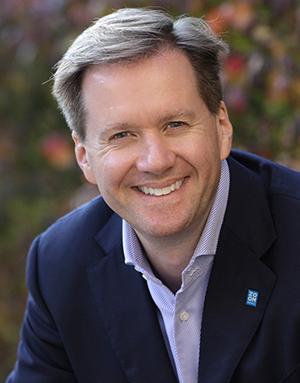The media landscape is undergoing the greatest change since the advent of television. At its heart are consumers who are now enabled through technology and new over-the-top platforms—Netflix, Amazon, Hulu, etc.—to consume the media of their choice when they want, how they want and with the ability to avoid advertising.

François de Gaspé Beaubien
Traditional TV viewership continues to decrease as well as being additionally fragmented. For the first time, live sports viewership, a segment that was previously thought to be impervious to declining audiences, is down. Pundits are now understandably predicting the slow demise of "linear programming." For perspective, current TV ad budgets in the U.S. are estimated at $75 billion.
Indeed, OTTs are the net "winners" in the battle for consumer engagement … and most of their models are ad free. Owners of distribution channels are now looking to acquire content in order to engage and retain consumers, as John Stankey, CEO of AT&T Entertainment, recently explained of his rationale for bidding to acquire Time Warner at the Wireless Influencers summit on Oct. 25.
Meanwhile, the digital duopoly of Google and Facebook over-represent their audience (by their own admission), what with clickthrough fraud (including bots), below-the-fold nonexposure and suboptimal measurement. (To be fair, both Facebook and Google are attempting to make adjustments to these problems.)
And mobile continues to increase its share of budgets (up by 58 percent, according to eMarketer) for good reason—the average consumer consults his phone over 250 times per day. But it bears pointing out that the advertising experience on that limited screen is not ideal for most brand strategists.
In short, ad blockage and avoidance has become the norm as opposed to the exception. The No. 1 challenge for marketers is actually reaching and engaging consumers. That has become exceedingly difficult to accomplish as consumers are in control and, frankly, for the most part, given a choice, they will opt out of watching marketing messages.
At the Video Everywhere Summit on Oct. 27 in New York, I asked the audience of media professionals—advertisers, agencies and media—for a show of hands of those who do not skip ads. Not a single hand was raised, and we are in the advertising industry!
So what's the solution? One, in my opinion, is digital place-based media, or DPB. DPB networks reach consumers where they seek to be and where they spend their time. Audiences are engaged at a most receptive moment: on their path to purchase.
Additionally, mobile is an enabler of digital place-based media. Though it reduces the impact of all forms of media, it doesn't for DPB and digital out of home, or DOOH, media. Further, location data from DPB/DOOH paired with mobile is, frankly, a game changer because each enhances the other.
The DOOH industry is growing at an 8 percent clip and will soon experience even faster growth fueled by mobile. The Digital Placed based Advertising Association's membership has more than doubled under CEO Barry Frey's leadership. Its membership includes digital, mobile software, hardware, ad tech, programmatic, mobile, location data and research companies and executives, and the ecosystem continues to expand.
As to Zoom Media's latest initiative, we have launched interactive personal video screens, or iPVS, on cardio machines across the U.S. We forecast that we will reach over 10,000 activated by the second half of 2017. Basically, gym members can access personalized VOD and, where broadband is present, their very own OTT services.
In other words, when one approaches marketers with the premise of a premium video network engaging hard-to-reach and affluent consumers in a captive environment with one-to-one marketing, with nonskippable prerolls, with perfect identification/segmentation—scrubbed for privacy—and live tracking via clickthroughs, and programmatic revenues combined with location based data, then advertiser demand will exceed supply.
It is my belief that DPB is coming into its own and that our industry will gain influence at the digital planning sessions because we are part of the solution to many marketer's challenges.
François de Gaspé Beaubien is the Chairman and Chief Coaching Officer of Zoom Active Lifestyle Marketing (@zoommediaUS) and the Chairman of the DPAA.








